
HOME
INTRO
SYMBOLS
ALMANAC
ECONOMY
GEOGRAPHY
STATE MAPS
PEOPLE
FORUM
NEWS
COOL SCHOOLS
STATE QUIZ
STATE LINKS
BOOK STORE
MARKETPLACE
NETSTATE.STORE
NETSTATE.MALL
GUESTBOOK
CONTACT US


West Virginia State Rock
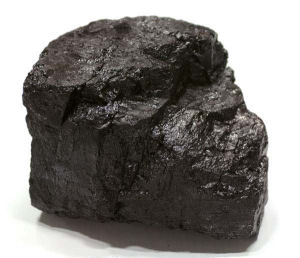
West Virginia State Rock: Bituminous Coal
Courtesy: University of Kentucky
Adoption of the official state rock
Like other official West Virginia symbols, bituminous coal was adopted by resolution, approved by both the West Virginia House of Delegates and the Senate. House Concurrent Resolution No. 37 was approved on April 11, 2009.
The adoption of bituminous coal as West Virginia's official state rock was spearheaded by Gilbert High School student Britnee Gibson. Her efforts to promote bituminous coal as the state rock grew out of a project she did for the CEDAR Regional Coal Fair in 2007.
CEDAR (Coal Education Development and Resource of Southern West Virginia, Inc.) is an all-volunteer, not-for-profit corporation which began as a partnership between the coal industry, business community and educators. mission is to facilitate the increase of knowledge and understanding of the many benefits the coal industry provides in daily lives by providing financial resources and coal education materials to implement its study in the school curriculum.
Ms Gibson accumulated 2,500 signatures in support of the idea and, with the help of Senator Truman Chafin and Delegate Harry Keith White, she was able to introduce the idea in the West Virginia Legislature. House Concurrent Resolution No. 37, with 46 sponsors, was read before the House of Delegates for the first time on March 18, 2009.
It was approved by the House by a vote of 96-0 and approved by the Senate on April 11, 2009.
West Virginia is the nation's second largest producer of coal, behind only Wyoming. Britnee's father is a diesel mechanic and works for a coal hauling company according to a press release issued on April 21, 2009 by the West Virginia Coal Association.
2009R2891
HOUSE CONCURRENT RESOLUTION NO. 37
(By Mr. Speaker, Mr. Thompson, and Delegates White, Eldridge, Anderson, Ashley, Barker, Boggs, Butcher, Campbell, Cann, Caputo, Carmichael, Craig, Crosier, Ennis, Evans, Fragale, Givens, Guthrie, Hutchins, Iaquinta, Klempa, Kominar, Longstreth, Mahan, Manchin, Marshall, Martin, Michael, Moore, Morgan, Moye, Perdue, Phillips, M. Poling, Reynolds, Staggers, Stephens, Stowers, Swartzmiller, Varner, Walker, Walters, Webster, Williams and Wooton)
Declaring Bituminous Coal to be the official state rock.
WHEREAS, From the very early days of European exploration of what is now West Virginia, the presence of coal was duly noted; and
WHEREAS, For example, in 1742 the first discovery of coal by an European explorer was made by John Peter Salley in the area now near Racine, West Virginia. John Peter Salley, therefore, named the nearby tributary of the Kanawha River where he observed the coal deposit as the Coal River; and
WHEREAS, In 1770 George Washington noted "a coal hill on fire" near West Columbia in current Mason County; and
WHEREAS, In 1810 the first commercial coal mine opened near Wheeling by Conrad Cotts for blacksmithing and domestic use; and
WHEREAS, The coal industry has evolved into and has been for many years an integral part of the economic and social fabric of the state; and
WHEREAS, Bituminous Coal is found naturally deposited in the vast majority of the fifty-five counties of our great state; and
WHEREAS, Whereby many of those deposits have great economic importance and also where extensive mining operations are located; and
WHEREAS, Whole communities in this state rely in large part, if not completely, on the Bituminous Coal industry for their continuing vitality; and
WHEREAS, Bituminous Coal is used as a major product in the manufacturing or steel used in the many automobiles in the country; and
WHEREAS, Bituminous Coal is used in the chemical industries and in the manufacturing of hundreds of other products, such as medicines, that enhance our quality of life; and
WHEREAS, West Virginia is the second largest Bituminous Coal producing state in the United States. For example, in 2008 there were 157,456 short tons of Bituminous Coal mined within West Virginia; and
WHEREAS, Many experts have asserted there is another five hundred years worth of commercially viable Bituminous Coal yet to be mined within West Virginia; and
WHEREAS, The Bituminous Coal industry remains essential to economic growth and progress in West Virginia and the United States; and
WHEREAS, It is fitting that a substance critical to the economic well-being of this great State of West Virginia and otherwise steeped in its history as Bituminous Coal be recognized as the official state rock of West Virginia; therefore, be it
Resolved by the Legislature of West Virginia:
That Bituminous Coal is hereby designated and declared to be the official state rock; and, be it
Further Resolved, That the Clerk of the House of Delegates forward a certified copy of this resolution to Britnee Gibson, a senior, currently enrolled at Gilbert High School in Mingo County, West Virginia.
West Virginia Law
Adopted by House Concurrent Resolution, bituminous coal is not documented as the official rock of the state in the West Virginia Code.
Sources...
West Virginia Legislature, Bill Status, (Accessed February 9, 2010)
Coal Education Development and Resource of Southern West Virginia, Inc. Mission, (Accessed February 9, 2010)
Christian Science Monitor, West Virginia names coal as its official state rock, (Accessed February 9, 2010)
West Virginia Coal Association, Gilbert High senior leads successful effort to name bituminous coal the official state rock, (Accessed February 9, 2010)
Shearer, Benjamin F. and Barbara S. State Names, Seals, Flags and Symbols: A Historical Guide Third Edition, Revised and Expanded. Westport, Conn: Greenwood Press, 3 Sub edition, 2001.
Additional Information
Coal Basics: from the United States Energy Information Administration (EIA).
More symbols & emblems: Complete list of official West Virginia state symbols.
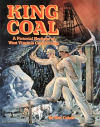
King Coal
Stan Cohen
King Coal: A Pictorial Heritage of West Virginia Coal Mining , by Stan Cohen. 145 pages. Publisher: Pictorial Histories Publishing Co. Inc. (November 1, 1984) King Coal is a well-illustrated overview of coal mining in the Mountain State. This book discusses and illustrates the basics of mining methods and operations, the geology of the state, life in a coal town, the unrest in the coalfields and more. King Coal describes the living conditions of the miners, and some of the state's worst mining disasters. You'll meet some of the more colorful and fabled characters of the industry, including Albert "Sid" Hatfield, Mary Harris "Mother" Jones, and former UMWA president William Blizzard.
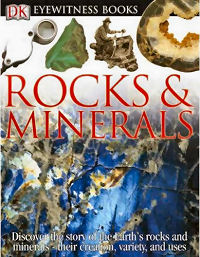
Eyewitness Books: Rocks & Minerals
Eyewitness Books: Rocks & Minerals, by Chris Pellant, R.F. Symes 72 pages. DK CHILDREN (August 2, 2004) Reading level: Ages 9-12. Here is a spectacular and informative guide to the amazing world beneath our feet. Stunning color photographs of rocks, fossils, minerals, precious metals, crystals, jewels and gemstones give the reader a unique "eyewitness" insight into the evolution and composition of the Earth. See rocks that have come from outer space, stalactites as old as dinosaurs, the strange and beautiful shapes of natural crystals and priceless nuggets of gold, silver and platinum. Learn what the Earth is made of - and how its rocks were formed, how early humans made the first flint tools and how diamonds and precious stones are cut, polished, and made into jewelry. Discover how prehistoric animals are preserved today as fossils, how volcanoes work, how rocks are formed from molten lava, how minerals and metals are mined and how pebbles on the seashore are worn down into sand, and much, much more!
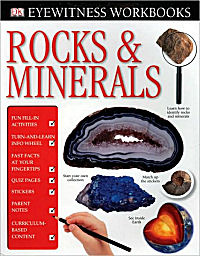
Eywitness Workbook: Rocks & Minerals
Eyewitness Workbooks: Rocks & Minerals, 48 pages. DK CHILDREN; Workbook edition (June 16, 2008) Reading level: Ages 9-12. Perfect for getting ahead at school or just stimulating children's interest, this groundbreaking series of workbooks leaves the competition in the dust, with exciting subjects, 48 full-color pages, a turn-and-learn info wheel, and special carrying folders. Never before have there been workbooks with so many opportunities for fun and interactive learning!
Peterson First Guides: Rocks and Minerals, by Frederick H. Pough. 128 pages. Houghton Mifflin Harcourt (August 15, 1998) Written and designed for the beginner, this book describes and illustrates the most common and interesting rocks and minerals, from simple sandstone to exotic gems. Illustrated with dozens of beautiful color photographs, it tells how these rocks and minerals formed and how to identify them--and includes tips on collecting.
Rocks & Minerals, by Dougal Dixon. 160 pages. Fireside (August 15, 1992) Beginning with a history of the earth's formation and development, this book explores the substances that compose the planet, movements within the earth, the surface effects of weather and water, and underground landscapes. It shows you how to search for, identify, and extract samples of various rocks and minerals, and for each rock and mineral type there is a brief mineralogy and explanation of its locations. There are also sections on mapping, preparing, and curating specimens, and geological sites on the six continents. Packed with more than 200 full-color illustrations, this comprehensive guide is the essential practical companion for natural science enthusiasts everywhere.
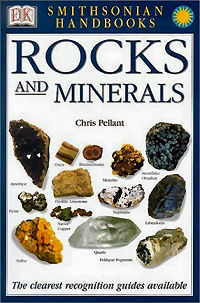
Rocks and Minerals
by Chris Pellant
Smithsonian Handbooks: Rocks and Minerals, by Chris Pellant. 256 pages. DK ADULT; 1st edition (September 1, 2002) The Smithsonian Handbook of Rocks and Minerals combines 600 vivid full--color photos with descriptions of more than 500 specimens. This authoritative and systematic photographic approach, with words never separated from pictures, marks a new generation of identification guides. Each entry combines a precise description with annotated photographs to highlight the chief characteristics of the rock or mineral and distinguishing features.
Field Guide to North American Rocks and Minerals, National Audubon Society. 856 pages. Knopf; 1st Edition (5th Printing) edition (May 12, 1979) Perfect for mountain climbers and hikers, this valuable reference covers more rocks and rocks in North America than any other available guide. 794 full-color photographs depict all the important rocks, gems, and rocks -- in many variations of color and crystal form -- and the natural environments in which they occur; written descriptions provide information on field marks, similar rocks and rocks, environment, areas of occurrence, and derivation of names. Includes a guide to rock collecting and a list of rock-forming rocks
Visit the NETSTATE West Virginia State Book Store for additional West Virginia related books, including West Virginia Reference Books, History, Biographies and Cookbooks.
 Custom Search
Custom Search

